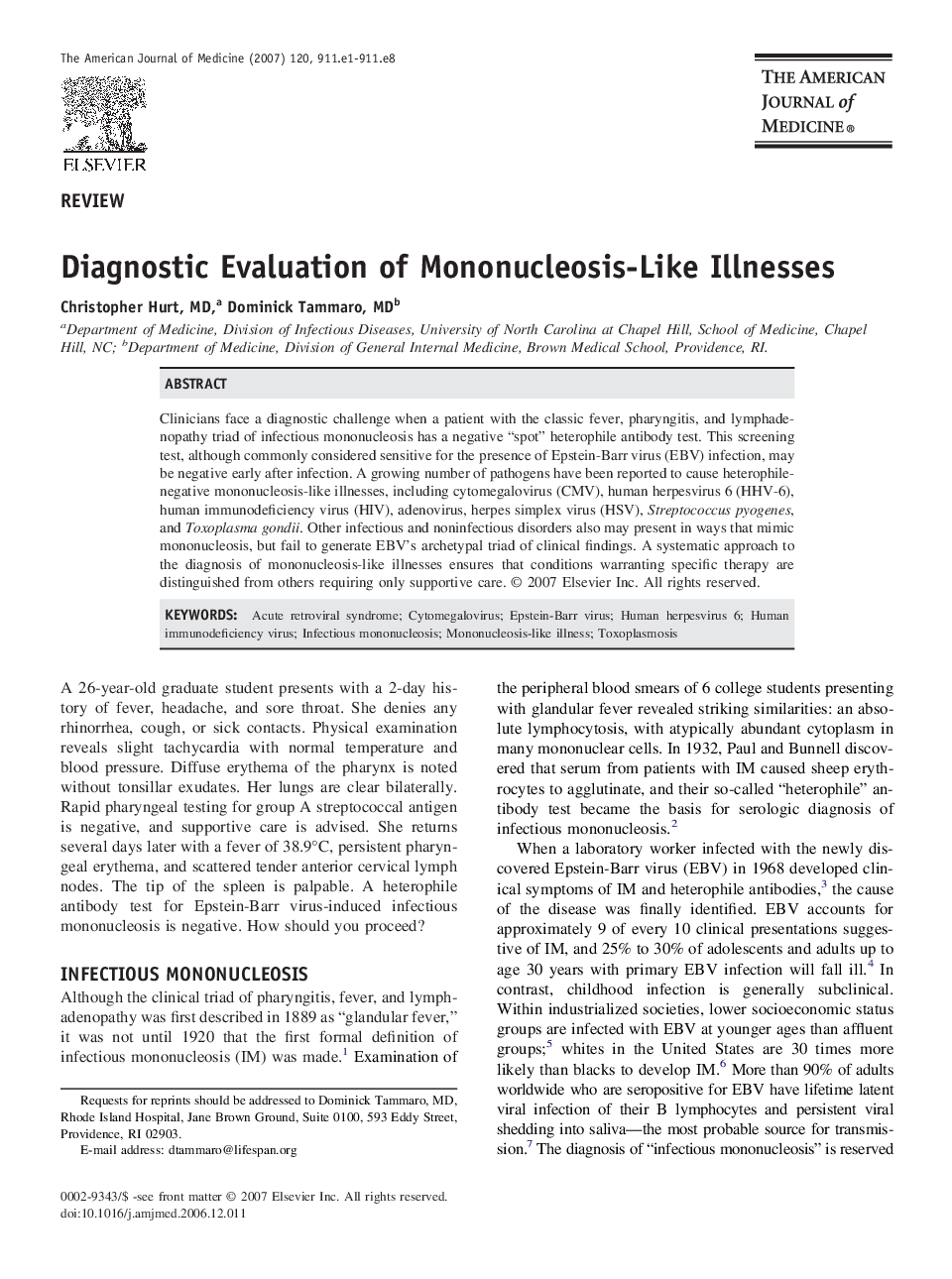| Article ID | Journal | Published Year | Pages | File Type |
|---|---|---|---|---|
| 2720366 | The American Journal of Medicine | 2007 | 8 Pages |
Abstract
Clinicians face a diagnostic challenge when a patient with the classic fever, pharyngitis, and lymphadenopathy triad of infectious mononucleosis has a negative “spot” heterophile antibody test. This screening test, although commonly considered sensitive for the presence of Epstein-Barr virus (EBV) infection, may be negative early after infection. A growing number of pathogens have been reported to cause heterophile-negative mononucleosis-like illnesses, including cytomegalovirus (CMV), human herpesvirus 6 (HHV-6), human immunodeficiency virus (HIV), adenovirus, herpes simplex virus (HSV), Streptococcus pyogenes, and Toxoplasma gondii. Other infectious and noninfectious disorders also may present in ways that mimic mononucleosis, but fail to generate EBV's archetypal triad of clinical findings. A systematic approach to the diagnosis of mononucleosis-like illnesses ensures that conditions warranting specific therapy are distinguished from others requiring only supportive care.
Keywords
Related Topics
Health Sciences
Medicine and Dentistry
Medicine and Dentistry (General)
Authors
Christopher MD, Dominick MD,
